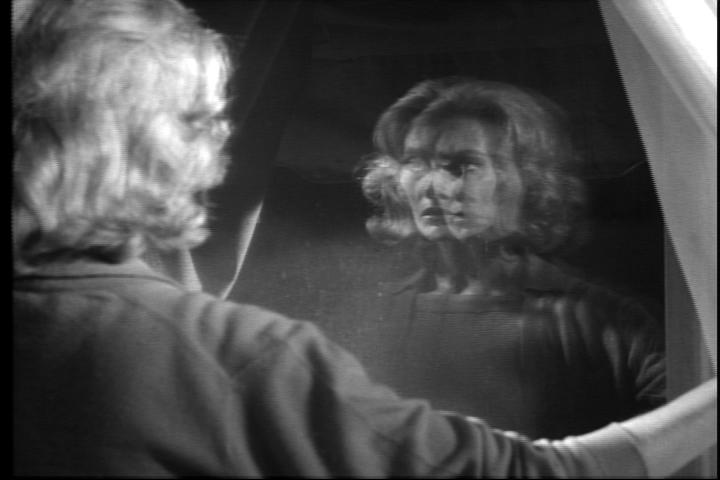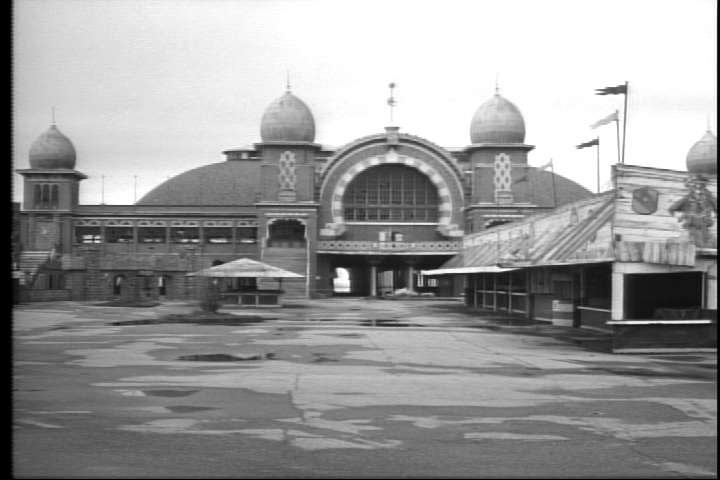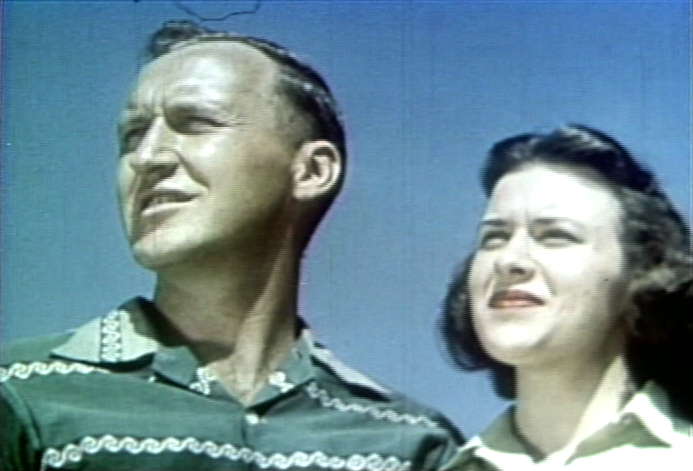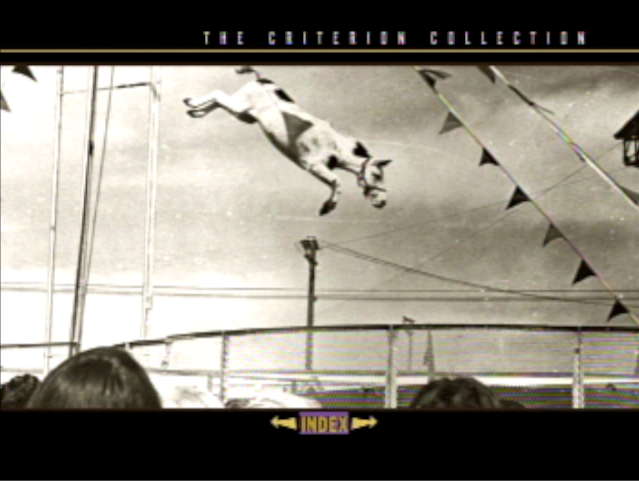Mimsy Review: Carnival of Souls
“If she is a magnet for the gothic, there is nothing exciting or sexy about it. The thrills of this carnival are cold ones, bits of death.”
Special features
| Booklet | 5 |
|---|---|
| Commentary Track | 5 |
| Deleted Scenes | 4 |
| Directors Cut | 9 |
| Documentary | 7 |
| Locations | 6 |
| Related Movies | 8 |
| Trailer | 4 |
| Written Interviews | 6 |
There are places in this world where the other world intrudes: old carnivals; deserted highways; busy bus stations… This seminal horror movie contains no blood, no knives, and for the most part, no budget, but it was well-written, beautifully shot, and carefully directed and acted. Inspiration from this movie can be seen in later films from “Night of the Living Dead” to “Beetlejuice”.
| Recommendation | Purchase• |
|---|---|
| Director | Herk Harvey |
| Writer | John Clifford |
| Movie Rating | 8 |
| Transfer Quality | 8 |
| Overall Rating | 9 |
| Formats |
|

Does Mary have no soul, or one too many?
I had never seen this, but on the strength of the Criterion label, the description, and a half-off sale at Amazon, I took a chance. It was well worth it. It’s filled with wonderful extras and a great movie.
A car falls over a bridge and into the water. Of the three girls inside, only one comes out of the water. Changed by her experience, Mary Henry leaves her Kansas town vowing never to return. She has a job as an organist in Utah. She drives there (it wasn’t her car that went over the bridge) without even telling her parents goodbye.
She plays the organ very well, but the organ-maker says she has no soul, only intellect. And that isn’t enough to live.
Herk Harvey uses shadows, light, and reflections masterfully in this black and white movie, producing an evocative, slow-moving dance. It’s an eerie, haunting movie. The only other movie I’ve seen that matches its eerie quality is The Haunting•.
The DVD set contains both the original theatrical version, which had been cut without the director’s input, and the director’s 1989 restoration; the latter brings the original 78 minutes to 83 minutes. Each version is on a different DVD, and each DVD has great extras describing not only how the movie was made but the environment in which it was born.

The Saltair ruins were the inspiration for the film.
Harvey, and through him writer John Clifford, was inspired by the Saltair amusement park in Utah, long abandoned. He’d seen its ruins while on a trip through Utah, where it sits next to the Great Salt Lake. There’s a five-minute tour of the locations used in the film, and a written tour and photo gallery of the Saltair amusement park. The former is interesting, the latter fascinatingly beautiful. It includes several photographs and designs from the Saltair’s heyday.
One of the problems with the site is that the Great Salt Lake has a very dynamic water level. It originally died out because the water receded. In the seventies the water returned, so they rebuilt in 1981—and then the water rose enough to flood the building. The waters receded enough to rebuild again in the nineties, but then they continued receding well away from the Saltair. It keeps coming back, though.
Another location that inspired Clifford was Lawrence’s Reuter Organ Company and its organ-testing room. There’s footage from that on the DVD, too. The testing room itself has apparently changed very little.
In grade school, I used to look forward to those “educational” films about faraway places or road safety, good or bad. Some of the good ones might have been made by Herk Harvey. Criterion includes several “educational” films directed by Herk for Centron, and about four of his commercial films to give you an idea of what he was doing before and after “Carnival of Souls•”. They range from “Signals: Read’em or Weep” (my favorite) to promos for Korea, Jamaica, and Kansas itself where Centron was located. The Kansas promo (Star 34, after Kansas’s star on the U.S. flag) is especially interesting because it shows a very young Herk Harvey, when he had just started working for the Centron Corporation.

A very young Herk Harvey praising Kansas in an early Centron film.
There’s a commentary on the restored version. What’s there is very good, but it’s a bit sporadic. To help, they have a “commentary index” that goes to the start of chapters that have a commentary, but the commentary doesn’t generally start where the chapters do. Some sort of visual cue that a scene has a commentary would have been useful.
The DVD set also contains a thirty-minute documentary, “The Movie That Wouldn’t Die” covering a revival showing of the film in Lawrence Kansas where it was mostly filmed. The showing brought together directory Harvey, writer John Clifford, and stars Candace Hilligoss and Sidney Berger. It’s a fun watch.
There are written interviews with Herk Harvey, John Clifford, and Candace Hilligoss. The writing is interspersed with photos and artwork. Candace Hilligoss’s interview ends with closeups of the movie poster showing the incredible artwork. It’s the same poster used for the cover of the DVD box, but the cover is too small to do it justice. it seems a bit weird reading text on the television, but they’re good interviews.

The DVD includes old photos and postcards from Saltair. One of the attractions: a diving mule.
There are a lot of outtakes, different takes on scenes. These would be a lot more interesting if there were a commentary talking about what they were reshooting for, and why these scenes didn’t make the cut. There are about 45 minutes of outtakes with no organization.
Finally, it comes with a small booklet with notes by John Clifford (who wrote it) and by University of Colorado Professor of Film Studies Bruce Kawin. John Clifford writes:
I was freed by the fact that I had no need to worry about Hollywood formats. I didn’t have to conform in any way. I knew who the producer and director would be, and that he would be open to whatever I proposed. It is, for instance, one of the few films from that period, or even today, that has no love story or romance, even as a subplot.
It was a one-shot effort. Part of the reason it was their only effort was the problems they had once they had to enter it in the system, to get played in theaters. But part of it is that they had an idea for a film, had the resources to make the film their way, and they made the film they wanted. There was no reason to make another one. If you can enjoy a movie that doesn’t conform and that unfolds with a graceful eerieness, I recommend Carnival of Souls. I enjoy it more each time I watch it.
| Director | Herk Harvey |
|---|---|
| Writer | John Clifford |
| Length | 1 hour, 18 minutes |
| Spoken language | English |
| Subtitle | English |
| Special Features | Booklet, Commentary Track, Deleted Scenes, Directors Cut, Documentary, Locations, Related Movies, Trailer, Written Interviews |
| More links |
If you enjoyed Carnival of Souls…
For more about Criterion, you might also be interested in Dazed and Confused and The Seven Samurai.
For more about influential, you might also be interested in Birth of a Nation and The Seven Samurai.
- Carnival of Souls•: Herk Harvey
-
 This is an awesome DVD package. It goes in-depth not only into Herk Harvey’s influential Carnival of Souls, but also the other kinds of movies he and his colleagues did. There is a great old construction safety short on here, for example.
This is an awesome DVD package. It goes in-depth not only into Herk Harvey’s influential Carnival of Souls, but also the other kinds of movies he and his colleagues did. There is a great old construction safety short on here, for example.
- Great saltair
- “Saltair is the name which has been given to several resorts located on the southern shore of the Great Salt Lake in Utah, about fifteen miles from Salt Lake City.”
- The Haunting• (DVD)
- The movie plays up Eleanor Vance’s mother’s death, and plays down her etherealness, but this is a great translation of an untranslatable book to movie.
- Reuter Organ Company
- “Adolf Reuter began employment at the Barkhoff Organ Company at the age of 20. He proceeded to work for a number of American pipe organ builders over the next 16 years, eventually working his way to the level of shop superintendent. In 1917, he was joined by Earl Schwarz to establish the Reuter-Schwarz Organ Company, and announced in The Diapason their goal ‘to put out an instrument second to none.’”


I worked at the Reuter Organ Co. in 1986 as an Installer and flue prep. I spent a lot of time in the assembly room. Although the company has since moved to a new facility across town, from what I could see of the room in the film, it had changed very little from the early '60s to the mid-'80s (if at all!)
I became familiar with the film a few years previously, while in college.
David in Missouri at 4:29 p.m. October 27th, 2012
DZH9s